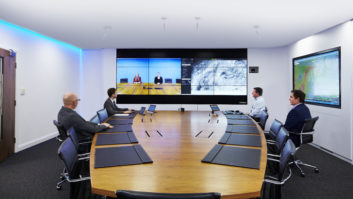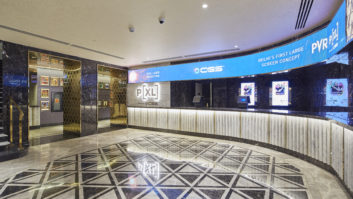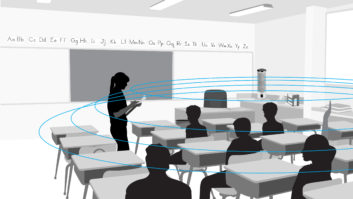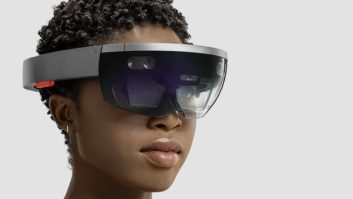Being aware of trends in consumer technology can lead to opportunities in the professional market, writes Bob Snyder
Many would argue that, today, it is consumer technology that drives innovation. Instead of the R&D departments of giant corporations designing photocopiers or fax machines for large corporate use, innovators race to create the next iPod, iPhone or iPad. Gigantic consumer markets, like the sun in any solar system, pull research money into their orbits and hold them there by sheer gravity.
This benefits us in pro AV when consumer interest accelerates and the demand for critical technology and its components become mass market. Suddenly the price of our corporate technology can drop rapidly as manufacturing ramps up and more competitors jump in chasing the consumer market growth.
Our typical reaction might be to avoid consumer technology that represents weaker products, more diluted technology and less durable goods. Yet by watching closely these consumer trends, one can anticipate opportunities in pro AV.
The traditional disdain is an anachronism. No one is suggesting that we will share specific product offerings… we truly have more robust needs. However, we will benefit from the development and the reduction in costs of key parts and components (for example, consumers buy millions of a product with a new chip, reducing its ongoing manufacturing cost; we can then incorporate that same chip into a different kind of kit for pro use).
Sharing software
The advent of digital technologies means tech advances can more easily port over from consumer to pro, especially in the area of software – and it’s software that the AV industry understands least.
Maybe you saw Microsoft’s Kinect during the Christmas period? An add-on to Microsoft’s Xbox 360 gaming console, it uses a digital camera and sensors to recognise people, gestures and voice commands. Players can control the console by waving their hand and make their on-screen avatars run, jump, swing and dance by moving their own bodies.
On route to 5 million in unit sales, Kinect is on a highway to a tremendous success – a road paved in advance by Nintendo’s Wii and Sony PlayStation 3’s Move & Eye motion control systems.
@page_break@
Looking to the future
So what does Kinect have to do with pro AV? To Microsoft, Kinect is the future of computing. “It’s a world where technology more fundamentally understands you, so you don’t have to understand it,” says Alex Kipman, an engineer on the Kinect design team.
If understanding us, the human species, is the goal then this is not going to be easy. While the consumer product is an advance in recognising a face when it sees one, the professional requirement is that we need to know what is shown on that face.
Have you ever seen the American TV show Lie to Me? The average person tells three lies in 10 minutes of conversation and Dr Cal Lightman can spot them. He detects the truth by analysing a person’s face, body, voice and speech.
Cal himself is one of Hollywood’s lies, albeit an untruth that’s designed to entertain us. Actor Tim Roth plays Cal, a world-leading expert in facial expressions and body language. Few know that Lightman is based on the real-life works of psychologist Dr Paul Ekman, who demonstrated universal expressions across human cultures, showing they were biological in origin as opposed to Margaret Mead and others who thought they were determined by culture.
Ekman developed the Facial Action Coding System (FACS), which codifies every human facial expression. Without Ekman’s work, you might not have Microsoft’s Kinect. And, with further application of Ekman’s work, Kinect becomes the forerunner of the next equation of computing: where faster computers plus more intelligent video equal a booming digital video security business.
Today the video security business – which started with CCTV in the early 1960s – faces the transition and the market disruption that elevates video security from networked to intelligent. And an ‘intelligent’ security is a different type of security.
“We see this trend in all our businesses,” says Intel’s Jose Avalos, GM & director of Intel Embedded Communication Division. “Once an industry makes it from standalone to network, then it embarks on the transition to intelligent.”
Intel defines ‘intelligent’ as a product category that includes quantitative measure, remote monitoring, rich interaction, cellular connectivity and interesting content, uses social networking, and is cross-functional.
As well as the ability to read faces and gestures, four underlying trends shape today’s video security industry:
- The transition to IP: The transition from analogue CCTV video systems to proactive, network-based IP video reflects the customer’s desire to treat video as any other network data asset and integrate video with other corporate data.
- Move to end-to-end solutions: A fragmented market where players vary (by products, markets served and target company size); video security buyers crave an integrated solution from a single source that can provide installation, support, maintenance and upgrades. If an end-to-end solution were based on an industry standard (not a proprietary one), then interoperability will lower costs and frustrations.
- Shift to IT-level service: IP video security that integrates with an organisation’s current IT infrastructure (network, server and storage technologies) can be better supported than when security needs a parallel service structure.
- Rise of integrated video analytics: Video analytics promise a simplified and automated process to relieve manual, labour-intensive operations.
If you agree the above market conditions sound familiar, consider the vertical markets that video security serves. We are all going in the same buildings, although not yet through the same doors. By shifting to IP, the chances increase that the number of doors will be reduced and the doormat will read ‘Welcome IT’.
@page_break@
Redefining ‘security’
With facial recognition, gesture technology and other vision technologies pioneered by consumer interest, new categories of use will develop, and these will not be exactly your father’s definition of ‘security’ as protection from theft and vandalism.
A computer-vision system can watch a hospital room and remind doctors and nurses to wash their hands. Through a computer-equipped mirror, a ‘security’ system can read a patient’s face to detect heart rate and other vital signs. A woman’s expressions as she shops will help marketers shape their offerings accordingly.
People will increasingly be surrounded by video cameras and displays that ‘see’ but also ‘reason’ about what they are seeing. Gradually the dumb displays we sell will turn smart – in more ways than we could ever imagine.
As much as we talk about our convergence with IT, we forget IT is converging with other industries and bringing them into our newly converged realm.
Some integrators already pursue video security. For the rest of us, as your family plays with Kinect, remind yourself that displays-with-brains, such as facial recognition, will soon be in our business lives as well as an important part of the future.
Getting into the video security business (if you are not already) may be the best preparation for a forward-facing integration business.







